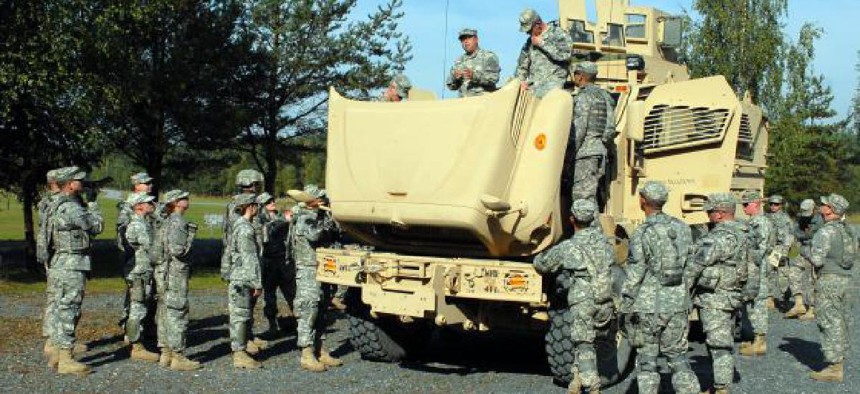
Army soldiers get new vision display sensors in mine-protected combat vehicles
The Army is developing a new touchscreen display for soldiers to access sensor data.
Rather than a single display only viewed and used by individual soldiers, the Army’s type II medium mine protection vehicles (MMPV) will instead include a suite of sensors and cameras that allow for head-down operation, driving, and situational awareness by every soldier in the cabin.
Co-developed by the Army’s Night Vision and Electronic Sensors Directorate (NVESD) and General Micro Systems, the capability gives each soldier in the MMPV a single touchscreen display which can access and control sensor data, video footage, weapons, and communications equipment. In the past, full-motion video, necessary to prevent operator sickness, could only be displayed at the dedicated operator’s station for each sensor. According to an Army statement, this new system helps improve the possible capabilities of the platform and solves challenges relating to the integration of new and existing capabilities.
NVESD’s software, in combination with a General Micro Systems’ ruggedized CPU built around Intel’s Xeon E5 processor, allows transmission of video throughout the displays found on the MMPV under the contract. Though currently limited to Type II MMPVs, the flexibility and low latency offered by the system could be used in other limited visibility vehicles like tanks or infantry fighting vehicles. GMS developed the system from its commercial off the shelf program over the past four years. Within the past 12 months, the Army expanded its requirements to include eight video input channels with additional associated processing power.
The contract for this hardware was awarded on October 9th and is worth up to $88 million over three years. The in-house software development and GMS’s direct manufacturing of many of the components, reduced the price per unit in the contract from over $200,000 to $50,000 for the entire system and has allowed for the rapid development over a six month period, according to
industry officials.
NEXT STORY: DOD tests and deploys upgraded JRSS